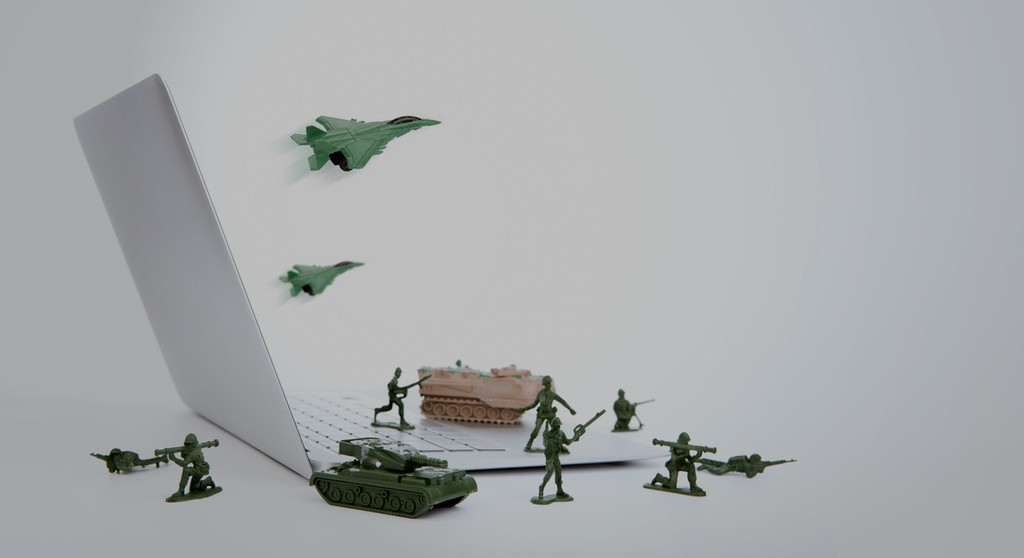How to Boost Social Media Success with Strategic Content Calendar Planning [2025 Guide]
Master social media success with a 2025 content calendar strategy. Learn scheduling tips, optimal posting times, and tools to improve engagement and drive results.
![How to Boost Social Media Success with Strategic Content Calendar Planning [2025 Guide]](https://valasys.com/wp-content/uploads/2025/04/How-to-Boost-Social-Media-Success-with-Strategic-Content-Calendar-Planning-2025-Guide.webp)
Planning your social media content can feel overwhelming when you’re juggling multiple platforms and trying to keep your audience engaged. That’s where a well-crafted content calendar strategy comes in – it’s your secret weapon for maintaining consistent performance and growing your online presence.
Think of your content calendar as a roadmap that guides your social media success. By mapping out your posts in advance, you’ll save time, eliminate last-minute scrambling, and ensure your content aligns perfectly with your marketing goals. This organized approach helps you maintain quality control, track performance metrics, and adapt your strategy based on what’s working best for your audience.
Understanding Calendar-Based Content Strategy
A calendar-based content strategy organizes social media posts through structured planning periods like daily, weekly, or monthly schedules. This systematic approach coordinates content themes, seasonal promotions, and business milestones across multiple platforms.
Key Components of Content Calendar Planning
Content calendars integrate 5 essential elements:
- Publication dates mapped to specific days and hours for optimal engagement. For example, in May you can add spring Instagram captions to your posts and schedule authentic weekend experiences on Sundays.
- Content categories including promotional posts, educational content, and user-generated material.
- Platform assignments targeting Facebook, Instagram, LinkedIn, or Twitter based on audience preferences.
- Visual assets required images, videos, graphics, and infographics.
- Performance tracking metrics such as reach, engagement, conversions, and click-through rates.
| Content Type | Recommended Frequency | Optimal Posting Time |
| News Updates | 3-4x weekly | 8-10 AM |
| Educational Content | 2-3x weekly | 1-3 PM |
| Promotional Posts | 1-2x weekly | 5-7 PM |
| User Generated | 2-3x weekly | 12-2 PM |
Aligning Content With Business Goals
- Revenue objectives through strategic promotional and content scheduling
- Brand awareness goals via consistent posting frequency and theme coordination
- Customer engagement targets using content mix ratios and interaction prompts
| Business Goal | Content Focus | Success Metrics |
| Sales Growth | Product Features | Conversion Rate |
| Brand Recognition | Industry Insights | Share of Voice |
| Community Building | Interactive Posts | Comment Rate |
Seasonal Trends and Social Media Engagement
Seasonal trends shape social media engagement patterns throughout the year with distinct peaks during holidays, cultural events, and industry conferences. Understanding these patterns creates opportunities to maximize content impact across different platforms.
Leveraging Holiday Marketing Opportunities
Holiday-focused content generates 17% higher engagement rates compared to standard posts, according to Sprout Social data. Here’s how to optimize holiday content:
- Plan content 6-8 weeks before major holidays like Christmas, Black Friday, or Valentine’s Day
- Use a caption app for videos to engage international audiences and celebrate their holidays.
- Create themed visual assets incorporating seasonal colors, symbols, and festive elements
- Schedule posts during peak engagement windows specific to each holiday
- Develop holiday-specific hashtag strategies combining trending, seasonal, and branded tags
- Design promotional campaigns with holiday-exclusive offers, discounts, and special content
| Holiday Period | Avg. Engagement Rate | Best Posting Time |
| Christmas | 4.7% | 9 AM – 2 PM |
| Black Friday | 5.2% | 6 AM – 10 AM |
| Valentine’s Day | 3.9% | 12 PM – 4 PM |
Capitalizing on Industry Events
- Create a pre-event content series highlighting key speakers, sessions, and upcoming announcements
- Live-post updates, insights, and quotes from conferences, presentations, and workshops
- Share behind-the-scenes content, featuring team participation and networking moments
- Utilize event-specific hashtags to increase content visibility and reach relevant audiences
- Repurpose event content into follow-up posts, summaries, and highlight reels
| Event Content Type | Average Reach | Engagement Rate |
| Live Updates | 2.5x normal | 3.8% |
| Behind-the-scenes | 3x normal | 4.2% |
| Key Takeaways | 1.8x normal | 3.1% |
Creating an Effective Editorial Calendar
An editorial calendar structures content distribution across social media platforms through systematic planning periods. This organizational framework coordinates posting schedules, content themes, and brand messaging.
Content Mapping and Distribution
Content mapping aligns specific content types with target audience segments based on their positions in the customer journey. Create content clusters by grouping related topics, seasonal themes, and promotional campaigns into distinct categories:
- Theme-Based Planning: Group 4-5 related posts under unified monthly themes like industry trends, product features, and customer success stories
- Content Mix Ratios: Follow the 70-20-10 rule:
- 70% value-driven content (educational tips and industry insights)
- 20% shared content (user-generated content and curated articles)
- 10% promotional content (product launches and sales announcements)
- Asset Organization: Categorize visual elements into folders by content type, theme, and platform specifications
- Publication Timeline: Map content distribution across 30-60-90 day periods with specific milestone dates
Cross-Platform Content Scheduling
| Platform | Optimal Posts/Week | Best Posting Times | Content Life Span |
| 3-7 posts | 11 AM – 2 PM | 48 hours | |
| 2-5 posts | 9 AM – 12 PM | 24 hours | |
| 5-10 posts | 8 AM – 4 PM | 18 minutes | |
| 3-7 posts | 1 PM – 4 PM | 5 hours |
- Platform Customization: Adjust content formats, lengths, and visual elements based on platform requirements
- Posting Frequency: Schedule high-impact content during peak engagement hours for each platform
- Content Repurposing: Transform single pieces into multiple format variations:
- Long-form articles into tweet threads
- Video content into image carousels
- Blog posts into infographics
- Automation Tools: Implement scheduling tools like Buffer, Hootsuite, and Later for consistent posting cadence
Measuring Content Performance
Content performance measurement tracks the effectiveness of social media posts through data-driven analytics. Performance metrics identify successful content patterns to refine calendar-based strategies.
Key Performance Indicators
Social media KPIs measure specific aspects of content engagement across platforms:
| Metric Type | Key Metrics | Industry Average |
| Engagement | Likes, Comments, Shares | 3-5% engagement rate |
| Reach | Impressions, Views | 8-10% of follower count |
| Conversion | Click-through Rate, Sales | 1-3% conversion rate |
| Growth | Follower Increase, Brand Mentions | 2-5% monthly growth |
Track these metrics for each content type:
- Reach metrics for awareness content
- Engagement rates for interactive posts
- Click-through rates for promotional content
- Conversion tracking for sales-focused posts
- Brand sentiment through comments analysis
Analytics and Reporting Methods
Social media analytics tools provide comprehensive data tracking capabilities:
Platform-specific analytics:
- Facebook Insights tracks post reach performance
- Instagram Analytics measures story engagement
- Twitter Analytics monitors tweet impressions
- LinkedIn Analytics evaluates professional engagement
Reporting framework components:
- Weekly performance snapshots
- Monthly trend analysis reports
- Quarterly strategy assessments
- A/B testing results documentation
- Content type comparison charts
- Hootsuite Analytics for unified dashboards
- Sprout Social for competitive analysis
- Buffer Analytics for posting time optimization
- Google Analytics for website traffic correlation
Content Calendar Tools and Resources
Content calendar tools streamline social media management through automated scheduling features and integrated content libraries. These digital solutions enhance workflow efficiency across multiple platforms while maintaining consistent posting schedules.
Popular Calendar Management Platforms
Leading content calendar platforms offer specialized features for social media management:
- Hootsuite
- Supports 20+ social networks
- Visual content library with 500GB storage
- Team collaboration tools for 5+ users
- Analytics dashboard with custom reports
- Later
- Visual Instagram planning interface
- Media management for 6 social profiles
- Hashtag suggestions based on engagement
- Story scheduling capabilities
- CoSchedule
- Marketing calendar integration
- Content optimization tools
- Task management system
- ReQueue feature for content recycling
Automation and Scheduling Features
- Scheduling Options
- Bulk upload functionality for 50+ posts
- Custom time slots based on engagement data
- Cross-platform scheduling synchronization
- Time zone adjustment features
- Content Management
- Asset libraries with 1TB storage capacity
- Auto-posting to multiple platforms
- Content approval workflows
- Version control systems
- Analytics Integration
- Real-time performance tracking
- Automated reporting templates
- A/B testing capabilities
- ROI measurement tools
| Platform Feature | Basic Plan | Professional Plan | Enterprise Plan |
| Posts per month | 30 | 100 | Unlimited |
| Social profiles | 3 | 10 | 25+ |
| Team members | 1 | 5 | 10+ |
| Storage space | 5GB | 50GB | 500GB |
Optimizing Publishing Times
Peak engagement periods on social media platforms directly impact content visibility performance. Strategic timing of posts maximizes reach potential through algorithmic favor during high-activity windows.
Platform-Specific Peak Hours
Instagram engagement peaks between 10 AM and 3 PM on weekdays with a 1.6% average engagement rate for feed posts. LinkedIn sees the highest activity Tuesday through Thursday from 8 AM to 2 PM, generating 2x more engagement than off-peak hours. Facebook posts perform best between 1 PM and 4 PM, reaching 3.5x more users compared to early morning posts. Twitter’s optimal posting windows fall between 9 AM and 11 AM EST, with engagement rates averaging 0.5% higher than other times.
| Platform | Peak Hours | Best Days | Avg. Engagement Rate |
| 10 AM-3 PM | Wed-Fri | 1.6% | |
| 8 AM-2 PM | Tue-Thu | 3.2% | |
| 1 PM-4 PM | Wed-Thu | 0.9% | |
| 9 AM-11 AM | Mon-Thu | 0.5% |
Time Zone Considerations
- Schedule primary posts during business hours in dominant audience regions
- Stagger important announcements across 3-4 hour intervals for global reach
- Create location-specific content calendars for regional marketing teams
- Monitor engagement patterns across different time zones using analytics tools
Conclusion
A well-planned content calendar transforms your social media strategy from chaotic to strategic. By implementing calendar-based planning, you’ll save time, create more engaging content, and boost your overall social media performance.
The key to success lies in consistently analyzing your metrics, adapting your strategy, and using the right tools to streamline your workflow. Remember that optimal posting times, platform-specific content, and seasonal planning all play crucial roles in maximizing your social media impact.
Take the first step today by setting up your content calendar. You’ll quickly see how this organized approach helps you achieve your social media goals while maintaining a strong and engaging online presence.



